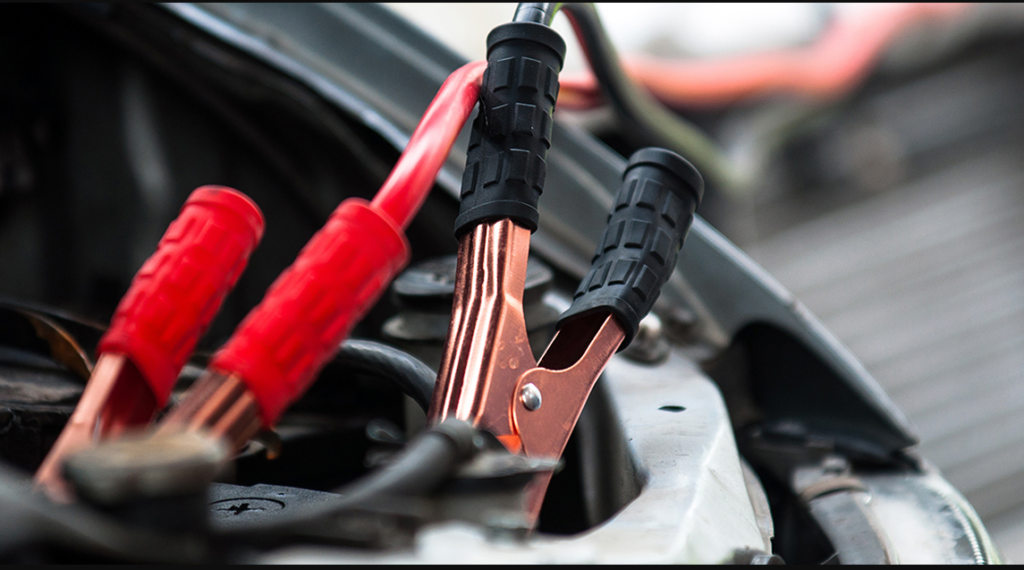Jump-starting a car is a process that can save the driver in unexpected situations related to a discharged battery. However, successful jump-starting directly depends on the choice of high-quality jump leads. To make the right choice, it is necessary to consider many factors, including technical characteristics, materials and practical convenience.
What are jumper cables, and why are they needed
Jumper cables, or jumper cables, are a set of two insulated wires with clamps on the ends, designed to connect the batteries of two cars. Their job is to transfer the electrical charge from a healthy battery to a dead one, allowing the car’s engine to start.
Jumper cables vary in their characteristics, such as length, material, conductor cross-section, and clamp type. Therefore, before purchasing, it is important to understand how to choose the jumper cables that are right for your car.
Basic criteria for choosing jumper cables
Let’s look at the key parameters that need to be taken into account when choosing:
Length of wires
- Standard wire lengths range from 1.5 to 6 meters.
- If your car is large, choose wires with a length of 4 meters or more to make it easier to connect to another car.
- It is important to remember that wires that are too short may not reach the other car’s battery, while wires that are too long will lose effectiveness due to increased resistance.
Conductor cross-section
- The larger the cross-section of the conductor, the better it transmits current. For passenger cars, a cross-section of 16 to 25 mm² is sufficient.
- For trucks or cars with diesel engines, it is recommended to choose wires with a cross-section of 25 to 50 mm².
- Wires with a smaller cross-section may overheat or even fail to cope with the task.
Conductor material
- Copper – the best material for wires, as it has high conductivity and durability.
- Aluminium, less efficient, but cheaper. If the budget is limited, aluminium wires with a larger cross-section can be selected.
- Sometimes you can find combined wires (copper + aluminium), but they are inferior to pure copper analogues.
Insulation
- High-quality insulation is resistant to low temperatures, sunlight and mechanical damage.
- For winter conditions, choose wires with frost-resistant insulation that remains flexible at -30 °C and below.
Quality of the clamps (crocodiles)
- The clamps must be metal, with a powerful spring to ensure reliable contact.
- Insulated clamp handles protect against short circuits and provide ease of use.
- Check the crocodile clips for teeth – they help ensure a tight grip on the battery terminals.
Types of Jumper Cables
Jump leads are divided into several categories depending on their purpose:
| Type of wires | Application | Recommended cross-section |
| For passenger cars | Light petrol engines | 16–25 mm² |
| For diesel cars | Heavy and powerful engines | 25–50 mm² |
| Universal | Suitable for different types of cars | 20–40 mm² |
When choosing jumper cables, how to choose the best option depends on your vehicle and the conditions of use.
How to use jumper cables correctly
Once you have selected quality wires, it is important to know how to use them correctly to avoid damage to your car or other dangerous situations. Here is a step-by-step guide:
Preparation
- Make sure both vehicles are on level ground and the handbrake is on.
- Turn off the ignition and all electrical devices (headlights, radio, air conditioning).
- Check the integrity of the wires and the absence of damage to the terminals.
Connecting wires
- Connect the red wire to the positive (+) terminal of the dead battery.
- Connect the other end of the red wire to the positive (+) terminal of a good battery.
- Connect the black cable to the negative (–) terminal of the good battery.
- Connect the other end of the black wire to a metal part of the engine or body of the car with the discharged battery.
Never connect the black cable to the negative terminal of a dead battery – this may cause a spark.
Starting the engine
- Start the car with a good battery and let it run for 2–5 minutes.
- Try to start the engine of the car with the discharged battery. If it does not start, wait a few more minutes.
- After successful starting, let the car engine run to recharge.
Disconnecting the wire
Disconnect the wires in reverse order:
- Black wire from the car body.
- Black wire from a good battery.
- Red wire from a good battery.
- Red wire from a dead battery.
Practical tips for selection and care
- Avoid cheap wires – this may result in overheating or insufficient current transmission.
- Check the flexibility of the insulation – especially important in winter.
- Keep your wires clean and avoid mechanical damage to them.
- Buy wires from trusted brands that suit your needs.
Now you know how to choose jumper cables and how to use them correctly. Reliable jumper cables will help you avoid difficulties on the road and be ready for any situation!
Use the power of cashback with reBITme! Choose jumper cables, activate cashback and enjoy additional benefits from every purchase.





